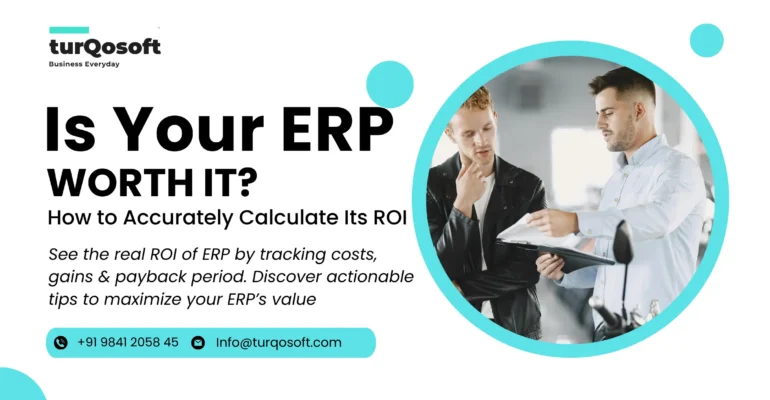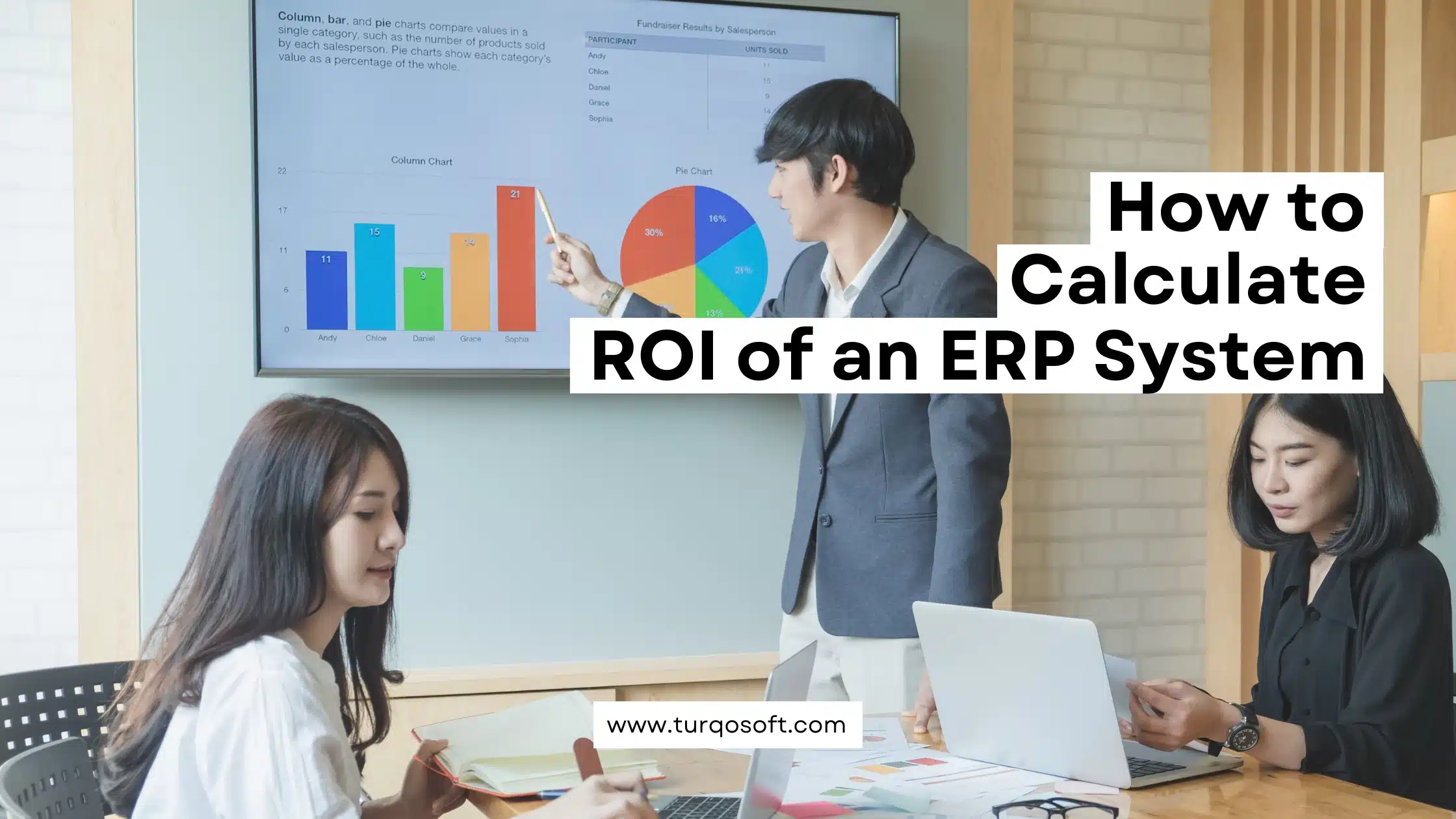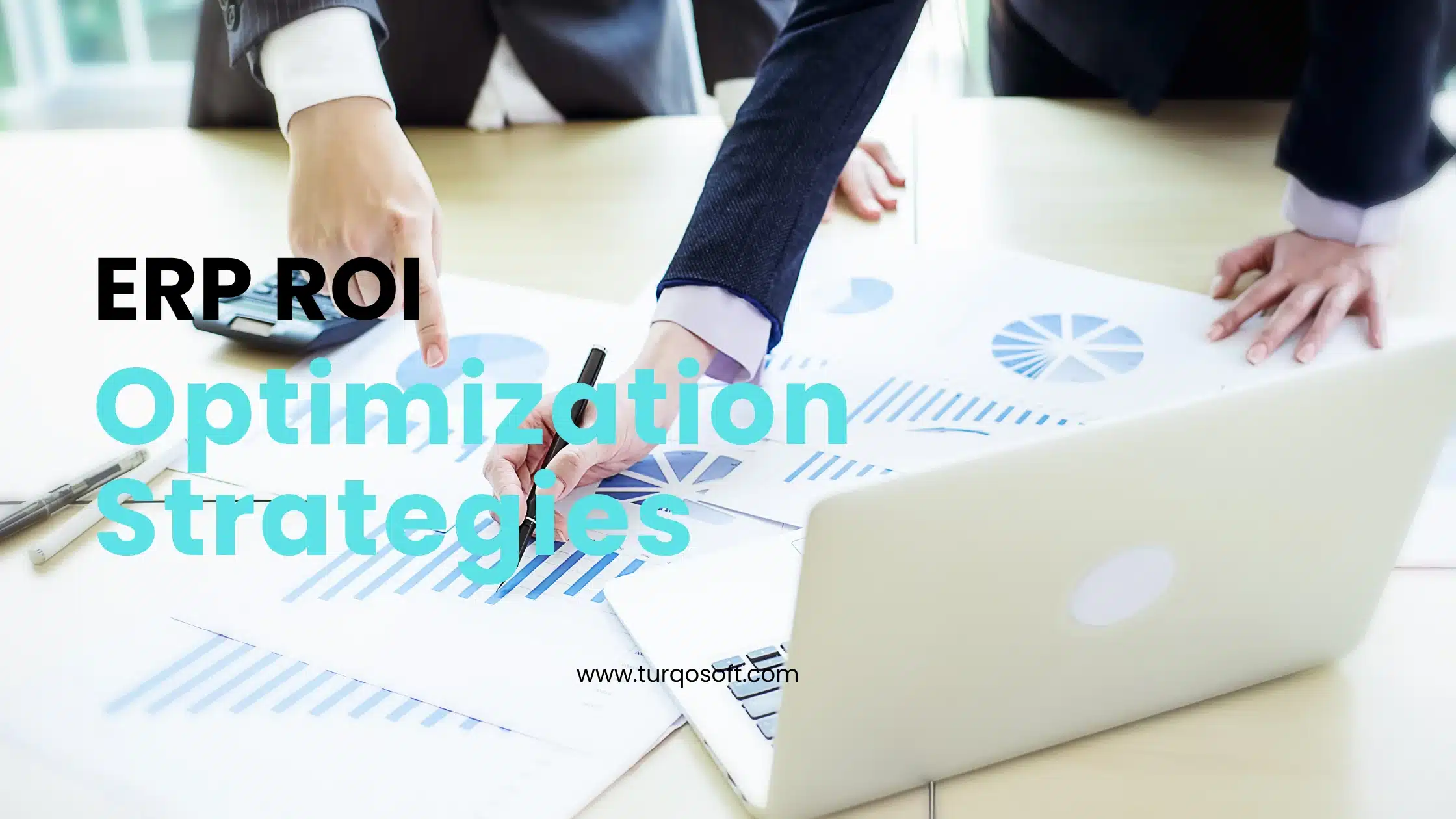Is Your ERP Worth It? How to Accurately Calculate Its ROI

You’ve invested a lot in your ERP system—now here’s the real question: Is it actually paying off? Can I know the ROI of ERP?
For many companies, ERP is one of the biggest tech purchases they’ll ever make. But here’s the catch—most only measure its worth in loose terms like “better efficiency” or “improved reporting.” That’s vague and doesn’t really tell you if your system is bringing in more than it’s costing.
This guide strips away the fluff. We’ll walk through ROI of ERP, explain ROI Calculations for ERP Implementation, and give you a clear way to see the ROI of an ERP System in numbers you can stand behind. We’ll also point out areas most leaders miss—like hidden savings, intangible benefits, and long-term value.
By the end, you’ll know exactly how to calculate the ROI in ERP, spot areas for improvement, and get more out of your investment.
1. The Often Overlooked Drivers of ERP ROI
When people talk about ERP ROI, they usually focus on the obvious: reduced admin work, faster reporting, or fewer mistakes. But there are other areas—often ignored—that can have just as much impact.
Hidden ROI from QA & Monitoring
ERP success doesn’t stop at go-live. Keeping it running smoothly with regular testing, quality checks, and system monitoring can save serious money.
-
ERP Today reports that continuous monitoring can cut downtime by up to 40%—that’s hours (or days) of productivity saved.
-
Intelligent Technologies says companies that treat QA as an ongoing task see fewer disruptions and better user adoption.
-
NetSuite and Oracle stress that catching process bottlenecks early can prevent big losses later.
Key point: QA and monitoring aren’t “extra” costs—they protect your ROI.
The Strategic Cost of Legacy Systems
Outdated systems drain budgets quietly:
-
More manual work and double data entry.
-
Higher maintenance bills.
-
Compliance headaches with poor record-keeping.
Kopis LLC found that replacing legacy systems can wipe out thousands in yearly labor costs and lower audit risks—both strong ROI wins that are often left out of calculations.
Soft Benefits That Shouldn’t Be Ignored
Things like faster decisions, happier staff, and better customer experiences might feel hard to measure, but they have a real price tag:
-
Quick decision-making can help you win sales sooner.
-
Engaged employees are less likely to quit, cutting hiring costs.
-
Happy customers buy again—and tell others.
Reliable Plant notes that a 5% bump in customer retention can boost profits by 25–95%. If your ERP improves service, that’s ROI.
2. Cost & Benefit Breakdown: Table and Insights
Start by mapping everything—from the first invoice to the last hidden expense.
| ERP Costs | ERP Benefits |
|---|---|
| Licenses, setup, customization | Labor savings, faster order-to-cash cycle |
| Training, change management | Lower inventory levels, fewer mistakes |
| Ongoing testing, retiring old systems | Better decisions, higher engagement, stronger compliance |
Insight: Acumatica and Intelligent Technologies say ERP users often see:
-
19% drop in operating costs
-
18% lower admin expenses
-
15% less money tied up in inventory
Tip: Don’t forget to include ongoing QA, legacy system phase-out, and intangibles in your ROI map.
3. How to Calculate ROI of an ERP System (Step-by-Step)

The Formula
Here’s the basic ERP ROI formula:
ROI(%)= (
Example:
-
Benefits: $500,000/year
-
Costs: $300,000/year
-
ROI = ($500,000 – $300,000) ÷ $300,000 × 100 = 66.7%
Metrics to Track
Money-related: profit margin, cash flow, inventory turnover
Operations: order-to-cash speed, error rates, month-end close time
Strategy: decision speed, system adoption, customer satisfaction
Oracle advises tracking a mix of financial and operational KPIs for the full picture.
Before-and-After Benchmarks
To make ROI real:
-
Record key numbers before implementation.
-
Track them again at 6, 12, and 18 months post go-live.
-
Compare to see changes.
4. Next-Level ERP ROI Optimization Strategies

Map Your Processes & Track KPIs
Draw out your workflows before and after ERP. You’ll see where automation cut time or removed manual steps. Oracle’s data shows process mapping can cut cycle times by up to 30%.
Make Intangible Gains Work for You
Show your board how better morale, stronger brand trust, or improved compliance adds value. Reliable Plant points out that having proof for these areas makes future budgets easier to secure.
Use Industry-Specific Insights
Leverage vendor ROI tools to see what ROI and total cost of ownership look like in your specific industry. Panorama Consulting found industry-tailored models make forecasts 25% more accurate.
Conclusion
ERP isn’t just a system—it’s an investment that should pay you back. When you include hidden savings, phase-out costs for old systems, and those hard-to-measure benefits like morale and customer loyalty, the ROI picture becomes much clearer.
Bottom line: Measure both the numbers you can see and the value you feel. Track them regularly. Adjust where needed.
Ready to find out what your ERP is really worth? Drop us an email at info@turqosoft.com or give us a call at +91 9841205845 for a detailed ROI review tailored to your business.
Alternatively, you can stay connected with us on various social media platforms such as LinkedIn, YouTube, Facebook, Twitter, Pinterest, or Instagram to receive regular updates on ERP and other pertinent topics.
Disclaimer: All ROI figures here are examples based on industry research. Your results will depend on your company’s unique operations and data.


